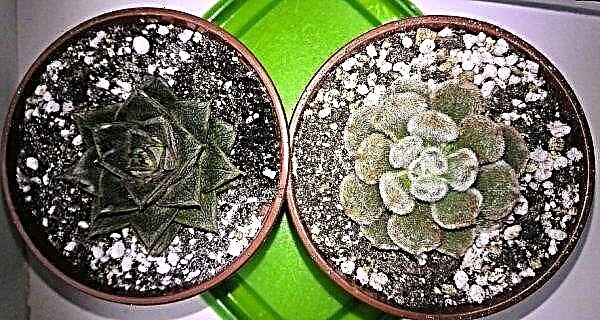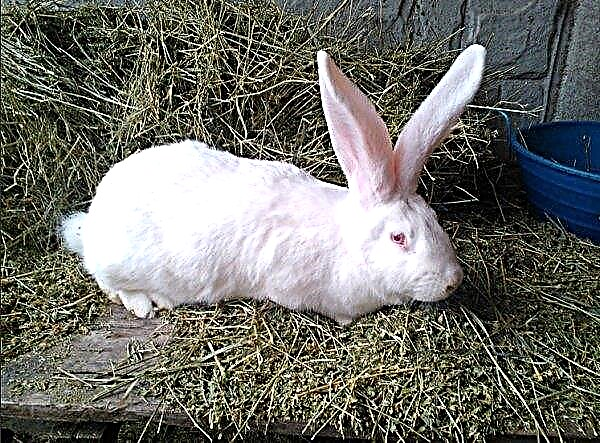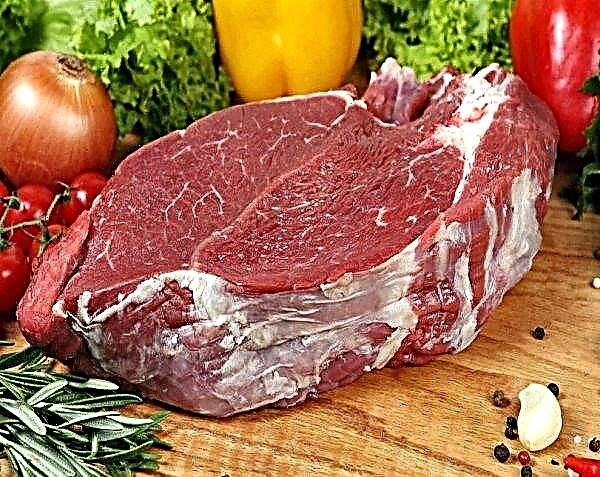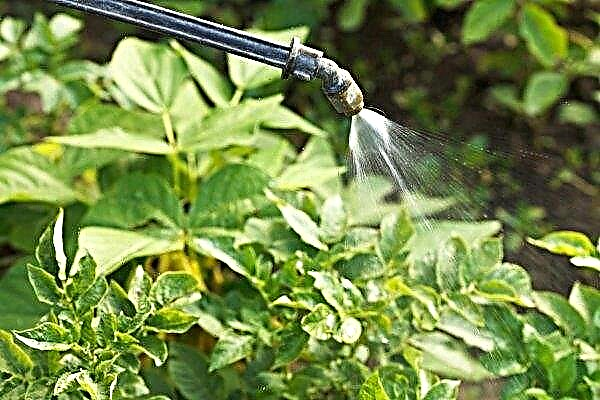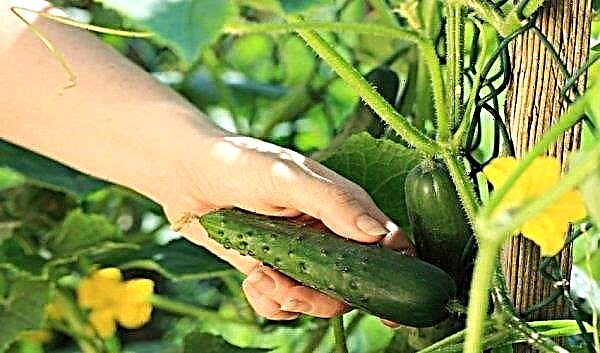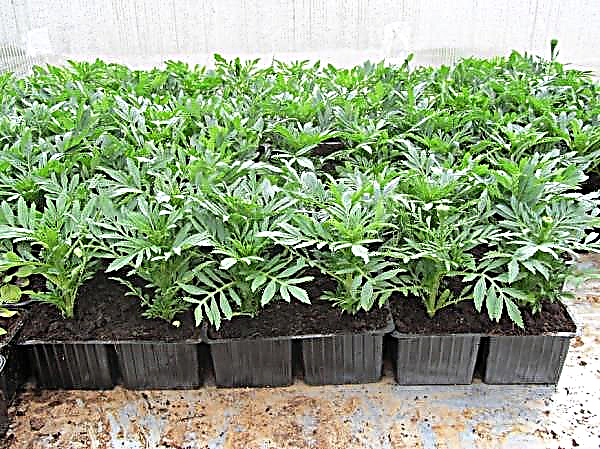Ginger is a perennial herb from the same family. It is known that the species began to be cultivated in ancient India, where it was believed that evil spirits could be driven away by its smell. Today it is a well-known and popular seasoning in modern cooking. In addition to the original taste and smell, the root also has a lot of useful properties. Used in medicine and cosmetology. Gardeners are increasingly wondering how to grow this southern root in mid-latitudes.
Is it possible to grow ginger in a greenhouse
It is worth noting that in the wild ginger almost never occurs. However, it can be planted in a greenhouse, along with other garden crops. To do this, you need to choose a strong elastic fresh root. It should not have signs of rot, mold, disease or spoilage, otherwise it will decay before it begins to germinate. Several buds must also be present, from which new plants subsequently form. To find such a rhizome with living buds can be quite difficult, because sellers specifically break them off to avoid germination and damage to the goods.
Did you know? Tincture of ginger juice with honey helps with joint diseases. This tool was used in ancient India. However, the drug is patented for the first time in the United States.
An ordinary film greenhouse is suitable for planting. To build mass, a plant needs at least six months. Therefore, it should be planted in the ground in March-April. At this time, there is no longer a significant decrease in daily average temperature. Harvest is necessary by mid-October, when the first freezing on the ground begins. Before planting in a greenhouse, the rhizome is germinated at home to awaken the kidneys. Germination is best started in February.
Suitable varieties
Ginger is classified into various types (more than 140):
- depending on the country in which it was cultivated (for example, Chinese, Brazilian, Jamaican);
- the color of the peel and cut (it is white, black, raspberry, yellow);
- in the shape of a rhizome (in the form of a hand or fist, rounded and flattened).
Due to the high content of essential oils, all species have a characteristic smell with slight distinctive shades (sometimes the smell resembles an orange, grass or kerosene). For planting, any type is suitable. Due to the fact that the choice of planting material is limited by the assortment in the markets and in supermarkets, most likely it will be ordinary white ginger.
The root, which everyone is used to using in cooking, having a beige peel and a yellowish cut, is called medicinal. Ginger can be grown not only to obtain rhizomes, but also as an ornamental plant. Beautiful inflorescences have such varieties as Ginger Torch, Zerumbet, Wonderful, Kusumudar, Purple. All of these types can also be used in gastronomy. Depending on the purpose, the method of planting the plant also varies. If you need an edible tuber, then germination is first carried out in a pot, and then the seedling is rooted in the ground. If you want to get a houseplant, it is left in a pot on the windowsill. The root in this case remains small, there is an abundance of greenery and exotic inflorescences.
All of these types can also be used in gastronomy. Depending on the purpose, the method of planting the plant also varies. If you need an edible tuber, then germination is first carried out in a pot, and then the seedling is rooted in the ground. If you want to get a houseplant, it is left in a pot on the windowsill. The root in this case remains small, there is an abundance of greenery and exotic inflorescences.
Important! Ginger bush greens have a pleasant lemon aroma and purify indoor air from pathogenic microbes, due to the large number of volatile.
Step-by-step instructions for growing ginger in a greenhouse
When growing in a greenhouse, you should know and observe some of the nuances of preparing the soil, planting material, as well as caring for the plant. In this case, efforts will lead to positive results.
Soil preparation
The soil for planting the tuber needs loose and nutritious. This can be a mixture of peat with clay (3: 1) or turf soil, humus leaves and sand (1: 2: 1). At the bottom of the pot in which the root will germinate, 3 cm of drainage should be placed so that water does not stagnate during irrigation. The soil must be regularly moistened and not even temporary dried out (in dry soil, the root instantly stops vegetative activity). Also, over time, fertilizing is added to the soil, which will be discussed below.
Rhizome preparation
Planting material must be young, fresh and contain eyes. The optimal length is 10-15 cm. If the rhizome is larger, it must be divided into parts. In this case, all sections must be sprinkled with ash or charcoal in order to avoid infection by pathogenic bacteria and fungi. The root is in a "sleeping" state. Before planting, buds should be awakened.
There are two options for how to do this:
- For 3-4 hours, place in water at room temperature (this will also help get rid of the chemicals that were used in the cultivation).
- For a week, wrap in a damp cloth, which should be washed every day so that mold does not appear.
 After awakening the kidneys, the rhizome can be divided into parts, each of them should contain a peephole, from which the shoot will subsequently hatch. It is permissible to plant the tuber and the whole. Then the plant will please with abundant greenery. It is necessary to dig the root into the ground no more than 2 cm. Make sure that the kidneys are directed upwards. The pot should be wide, but not deep. It should be installed in a warm place (+20 ... + 22 ° C).
After awakening the kidneys, the rhizome can be divided into parts, each of them should contain a peephole, from which the shoot will subsequently hatch. It is permissible to plant the tuber and the whole. Then the plant will please with abundant greenery. It is necessary to dig the root into the ground no more than 2 cm. Make sure that the kidneys are directed upwards. The pot should be wide, but not deep. It should be installed in a warm place (+20 ... + 22 ° C).
After the root is planted in a pot, the soil should be abundantly moistened and watering should be stopped until shoots appear. After 1.5–2 weeks, conical sprouts will appear. Then shoots and sharp leaves. Regular watering in small portions and loosening of the soil after the water is absorbed is mandatory. Make sure that direct sunlight does not fall on the shoots. Spray greens periodically with water. Feeding is possible every 2 weeks with chicken droppings diluted in water (1:10).
Transplanting
Planting is carried out in late March - early April. The prepared seedling should be rooted in a greenhouse heated to +22 ... + 25 ° C (it is necessary to constantly maintain the temperature regime, otherwise the root will fall asleep and it will not be easy to awaken). It should be planted in holes with a depth of 15 cm, be sure that the kidneys are above the ground. If there are several seedlings, then the distance between them should be 10-15 cm.
Did you know? The ancient Chinese philosopher and thinker Confucius, considered ginger a means for "youth of the spirit," helping to maintain visual acuity and mind until old age.
The rooting site should be in partial shade, so that the plant suffers from sunlight, but there is no direct sunlight. After rooting, carry out abundant watering and loosen the soil to a depth of 1 cm. The earth should always remain moist and loose. You will have to constantly monitor humidity, temperature and lighting, because ginger comes from the subtropics and does not tolerate cold weather. Ginger planting scheme.
Ginger planting scheme.
Dressing and care
Southern ginger plant, respectively, to obtain a crop, it is necessary to create a favorable microclimate for it. The temperature in the greenhouse should not fall below + 18 ° C. In the event of a large amount of sunlight, the bed must be shaded manually. Make sure that there are no drafts. There should be a drainage system in the soil so that the water does not stagnate and the root does not rot. In case of high air dryness, spray greens from a spray bottle.
Ginger, which is grown for the purpose of eating, once every 2 weeks, must be fed with organic fertilizers: an extract of algae or mullein, diluted in water (1:10). A plant intended solely for aesthetic purposes can be fertilized with the usual universal tool for indoor flowers.
Harvesting and storage rules
Ginger, which began to germinate in February, will yield a crop in approximately mid-October (if you started the whole process later, the ripening of the root will be delayed accordingly). You can understand that it’s time to dig out the roots by the appearance of the bush: the greens turn yellow and fall apart in different directions. You need to dig a bush, trying not to damage the new rhizomes and remove the old one from which young ginger was germinated. Cut off the roots and stems. Rinse young tubers with cool water. Several rhizomes with kidneys can be set aside for planting for the next season. It is imperative to dry the harvested crop in a place with good lighting for 2-3 days. Then the rhizomes are wrapped in parchment, foil or cling film, and placed in cool, for example, in a refrigerator or cellar. Thus, the root can be stored for up to 1 month. To keep ginger longer, it can be divided into portions and frozen, pre-wrapped with cling film or placed in a vacuum bag.
Several rhizomes with kidneys can be set aside for planting for the next season. It is imperative to dry the harvested crop in a place with good lighting for 2-3 days. Then the rhizomes are wrapped in parchment, foil or cling film, and placed in cool, for example, in a refrigerator or cellar. Thus, the root can be stored for up to 1 month. To keep ginger longer, it can be divided into portions and frozen, pre-wrapped with cling film or placed in a vacuum bag.
Important! Thawed root has the same properties as fresh. The product must not be re-frozen.
Growing ginger in mid-latitudes is a new activity for gardeners. This process is quite lengthy, but it does not take much effort and requires a minimum of material costs. The harvest will pleasantly surprise you with its qualities. Fresh tubers are much juicier and less sharp than those bought at the supermarket. In addition, they are grown in clean soil with exclusively organic fertilizers. If you follow the recommendations for planting and care, you can get your own ginger, which will help in the winter to cope with a cold or just become a worthy addition to your favorite dishes.


